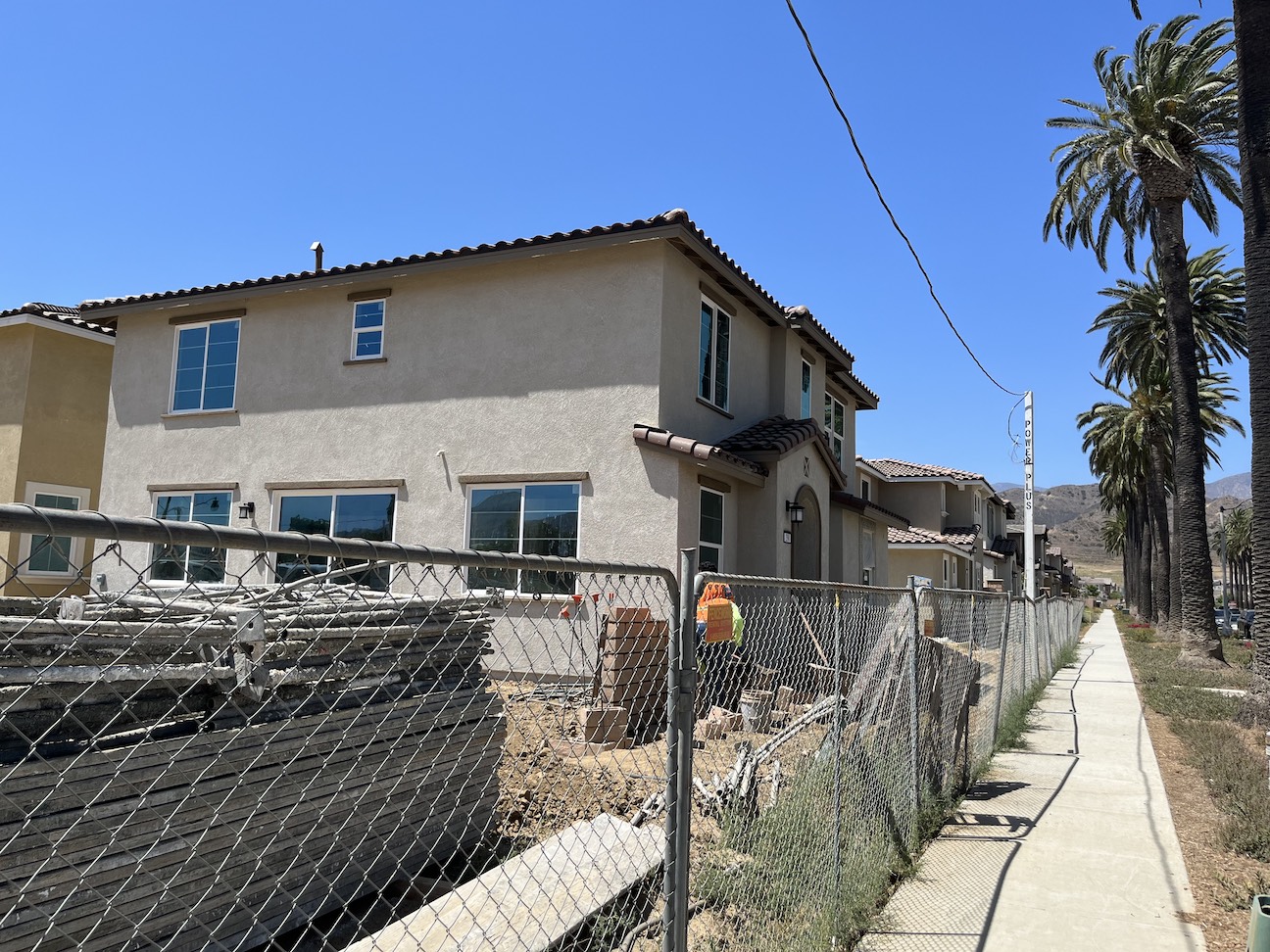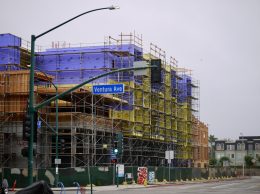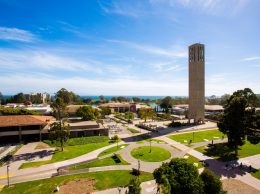Rising interest rates, uncertain economy haven’t slowed homebuilding in region yet
IN THIS ARTICLE
- Latest news Topic
- pacbiztimes Author
By pacbiztimes Thursday, August 11th, 2022

Despite rising interest rates and a potentially slowing U.S. economy, homebuilders and residential developers seem eager to build in the tri-county region.
The costs of materials and labor to build new homes have increased, and rising interest rates means potential homebuyers have to pay more mortgage interest, leaving less money for the principal. Developers are also hurt by rising interest rates, if they have to borrow to buy property or finance construction.
Still, planning officials and other observers in multiple cities say they haven’t seen a slowdown in residential building permit data so far, though it’s possible one may be on the way.
“We’re not seeing any slowdown in applications and those that have already started the process are still moving forward,” said Peter Gilli, the city of Ventura’s community development director. “These companies are used to the economy going through its ups and downs.”
Gina Perrault, the marketing director at Coastal Community Builders, said rising interest rates and the economy’s uncertain future are forcing developers to be more efficient in their planning. Coastal Community Builders has built more than 3,000 homes in San Luis Obispo and Santa Barbara counties since it was founded in 1988.
“The rising interest rates definitely affects our strategic planning, yet we still have to work to meet the housing shortage in California, so it adds an extra layer of complexity as we evaluate future projects,” Perrault said.
Coastal Community Builders is planning to build 52 duplex residences in Orcutt. The models are expected to open spring 2023, and the entire development is projected to be done by the end of 2024. In San Luis Obispo, the company plans to build 198 single-family homes and 96 condominiums. The models in that development are open, the project should be complete in about five years.
Other projects in Coastal Community’s pipeline include 41 homes on large lots in Orcutt, set to open in spring 2023, and 57 homes in Santa Maria, in 2024.
Gilli said developers often don’t pull back when the economy slows because the planning, approval and permit process for new homes takes years. By the time a project hits the market, any potential recession could be long over.
“Most developers are not going to stop their entitlements or work on construction drawings because, by the time they get them, the economy might be in a different spot,” Gilli said.
However, some developers have returned to the original property owners to renegotiate their purchase prices, amid inflation and fluctuating interest rates, he said.
The California Economic Forecast monitors residential building permit statistics for Goleta, Santa Barbara and Carpinteria in Santa Barbara County. Mark Schniepp, the founder and director of the firm, said he hasn’t seen any slowdown of new housing in his latest data, which runs through June.
“The higher [interest] rates certainly would have affected things,” Schniepp said. “Maybe it’s still to come, but I don’t notice any of it yet from the data.”
The housing market was red hot in 2021 and early 2022, after slowing down early in the pandemic in 2020, said Dawn Dyer, the president of the real estate firm Dyer Sheehan Group in Ventura.
“Partially, that’s because the demand is much greater than the supply of housing,” Dyer said. “At the same time that demand for housing is growing, new construction is down from what it had been in decades past.”
Now, she said, some buildings are “pulling in their horns.” It’s hard to plan housing projects because it can take so long to get them approved. On top of that, it’s become difficult to predict when suppliers will honor contracts for preordered lumber and steel, when labor might be hard to come by, and when prices of raw materials might increase.
“It becomes increasingly difficult to make those kinds of projections,” Dyer said. “When the margins are already skinny, there’s not a great incentive.”
Erich Schaefer, the CEO of the design and build firm Schaefer Custom Homes in San Luis Obispo, said costs to build new homes are up about 35% over the past year. As inflation surges and homes get more expensive, some of Shaefer’s clients for new homes or remodels have put the brakes on their work.
“They have their million and a half budget, which should be plenty of money to build a nice custom home,” Schaefer said. “All of a sudden, now that’s coming in at $2 million, compared to when we first spoke when they made first contact a year ago.”
The Vera Cruz Village project, an affordable housing development by the Housing Authority of the City of Santa Barbara, is under construction on east Cota Street. The 28-unit studio project will serve formerly homeless people.
Supply chain disruptions during the COVID-19 pandemic increased construction costs. In the finalized contract, the cost of construction rose by $2 million, said Rob Fredericks, the executive director and CEO of the Housing Authority of the City of Santa Barbara.
“There’s also been a run-up of prices during COVID until just now. With mortgage rates increasing, we’re seeing a stabilization of pricing in Santa Barbara for both single-family homes and multifamily, but it’s still high,” Fredericks said. “If we’re purchasing an existing apartment complex that we can keep affordable or turn into affordable, we need to come up with that purchase price that works for us, and can at least have a stable cash flow to pay our expenses.”
The Housing Authority has several proposed developments on the horizon, including more than 60 rental units at the corner of Carrillo and Castillo streets in downtown Santa Barbara. Another proposed development calls for construction of a new 48-unit multi-family residential development on La Cumbre Road.
“I don’t expect us to be so hampered by pricing that it would prevent us from beginning construction and moving forward, as long as we’re able to come up with those sources of funding that are desperately needed,” Fredericks said.











